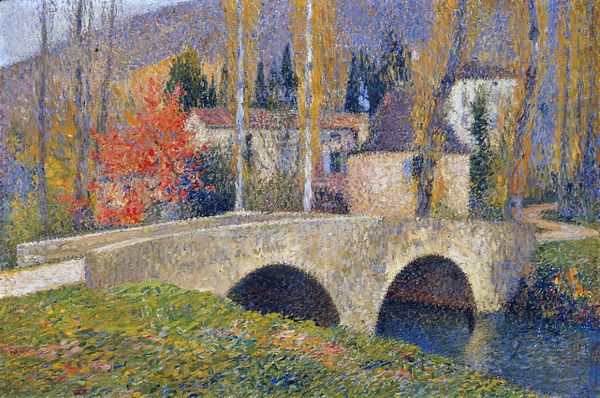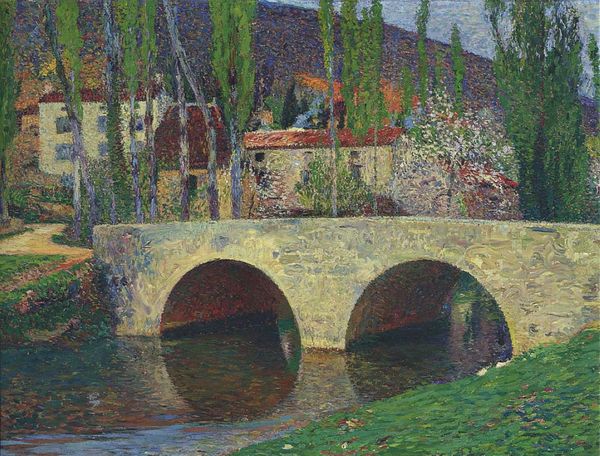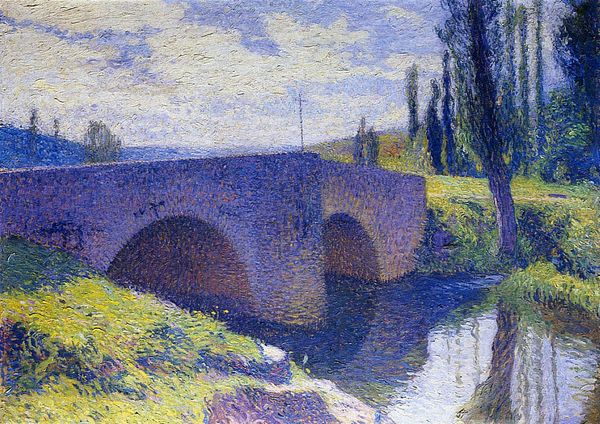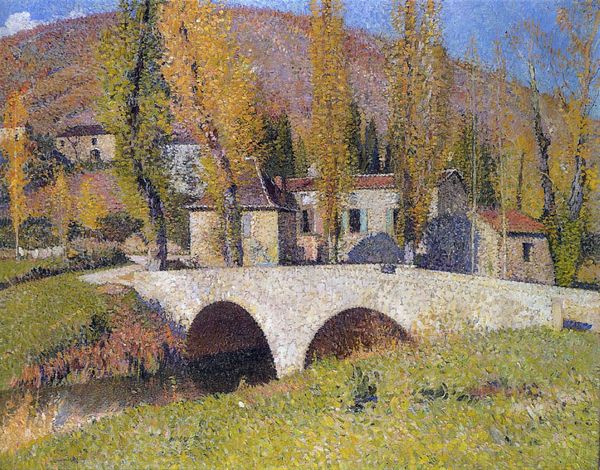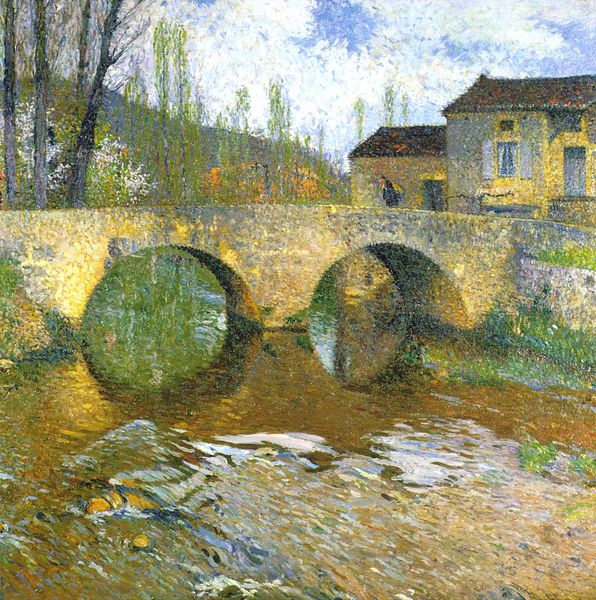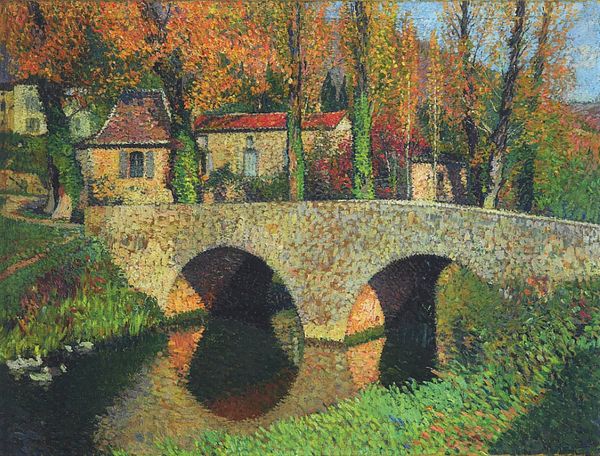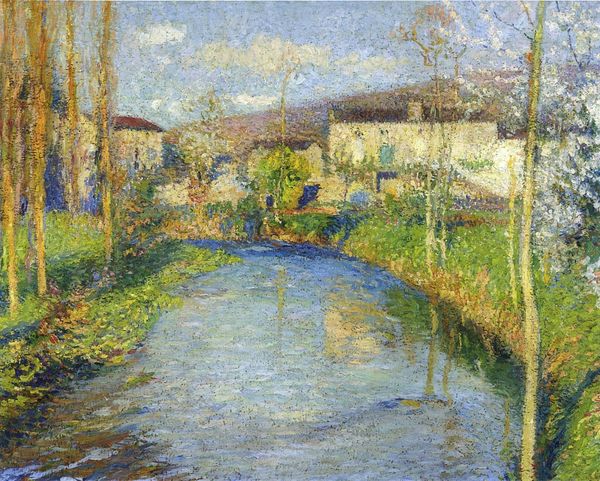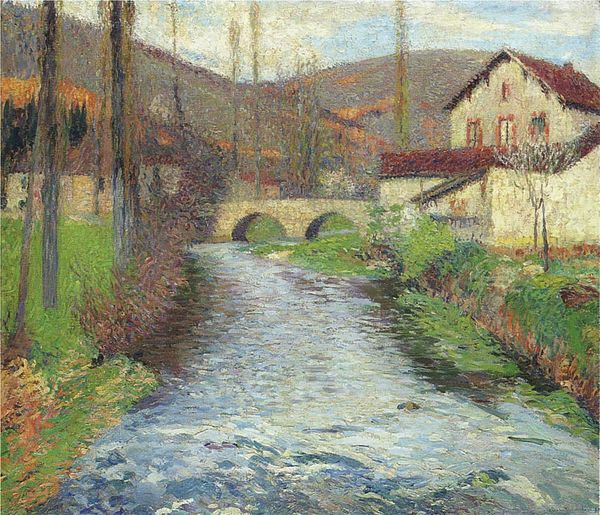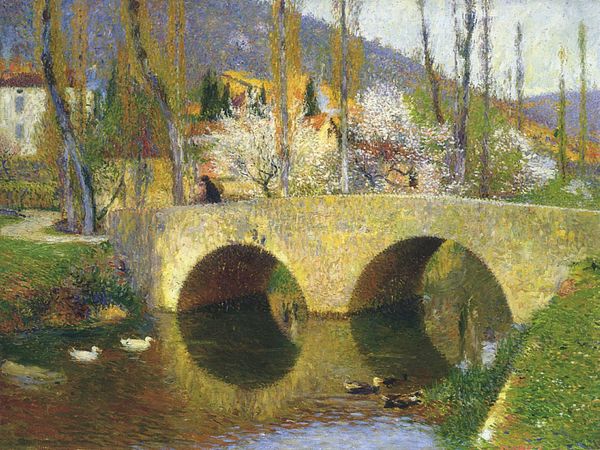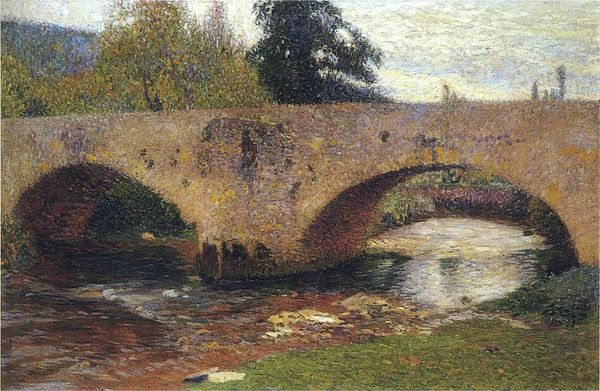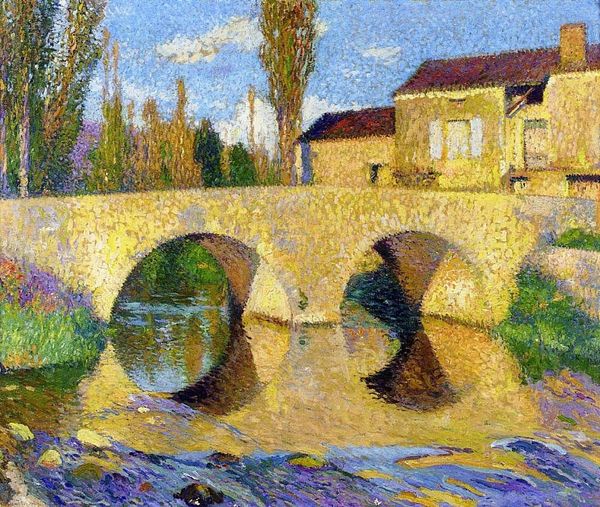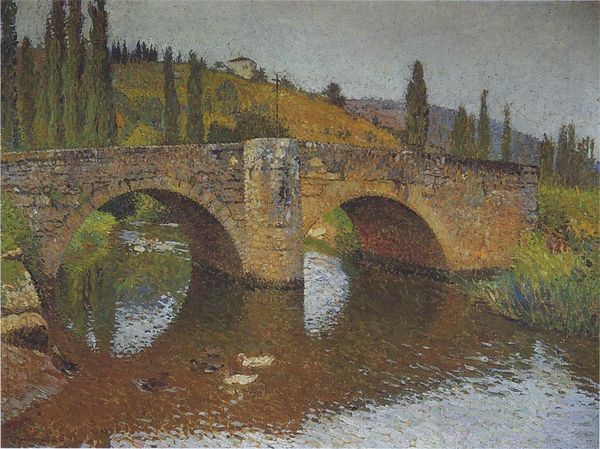
painting, oil-paint
#
tree
#
painting
#
impressionism
#
oil-paint
#
landscape
#
river
#
house
#
impressionist landscape
#
nature
#
oil painting
#
water
#
post-impressionism
#
building
Copyright: Public domain
Curator: The shimmering light and tranquil scene draw you in, don't they? It's so peaceful. Editor: It really is. And look at that texture! Tiny dots building this…dreamlike bridge? This is clearly Henri Martin, rendering the landscape using the divisionist technique that defined his post-Impressionist period. Curator: Indeed! We’re looking at "The Bridge in Labastide du Vert," a painting that encapsulates Martin's explorations with pointillism. It reflects how late 19th and early 20th-century artistic communities increasingly favored representing their regional identities over participating in central Paris’ art scene. Editor: It’s fascinating how Martin uses oil paint to build this scene. If you look closely at the bridge itself, you see those strokes, those dabs of color—almost a mosaic. Considering this level of handcrafted detail, I find myself questioning our understanding of what separates a painter's craft from textile work, for instance. Curator: And consider that context—this is painted in a region experiencing significant change! The industrial revolution touched even these small towns. The painting really mediates that traditional rural life meeting modern aesthetics. This work’s creation and exhibition must be read within shifting political landscapes as well as social contexts impacting how public perception evolved about what constituted fine arts versus mass culture during the Third Republic era when access grew beyond just privileged audiences. Editor: Absolutely. Thinking of these landscapes and its relation with public accessibility is also important. While these impressionist approaches attempted visually dissect experience down through color light theory that it's presented was framed culturally though. What we consume influences, too, shaping viewers engagement just given mass consumption avenues expanding fast after Second Industrial Revolution. Curator: Looking closely, it is truly amazing to consider his labor; the act itself feels meaningful, regardless the lack or existence formal documentation from these practices specifically, though archives preserve clues everywhere too—catalogues descriptions journals etc from exhibitors during then! I still am thinking whether there might be deeper questions than that at play besides aesthetics too given we now know plenty related worker’s living styles during his time in contrast artistic privileged lifestyle still prevalent despite such political ideological push from socialists sympathizing views, maybe there were tensions bubbling about inequality within artists’ work environments as social commentaries! Editor: Fascinating reflections… It reminds us how profoundly visual production engages across time—connecting socio-political contexts into experiences of both beauty art production value structures under shifting frameworks shaping historical perceptions ultimately. Thank you! Curator: A privilege to analyze artwork like it for wider reflection… till our next conversation!
Comments
No comments
Be the first to comment and join the conversation on the ultimate creative platform.
